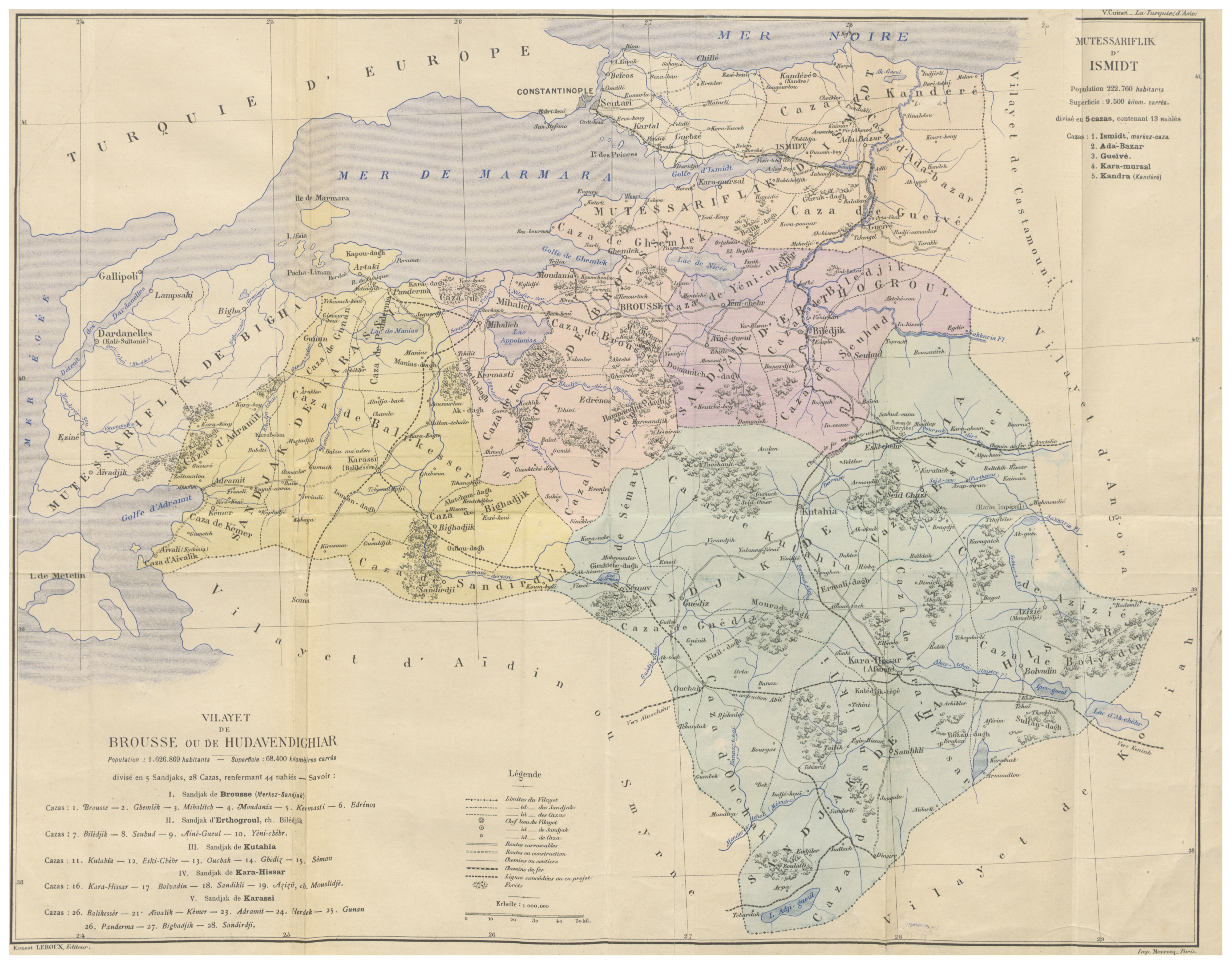Mutasarrıflık on:
[Wikipedia]
[Google]
[Amazon]
 Mutasarrif or mutesarrif ( ota, متصرّف, tr, mutasarrıf) was the title used in the Ottoman Empire and places like post-Ottoman Iraq for the governor of an administrative district. The Ottoman rank of mutasarrif was established as part of a 1864 reform, and its holder was appointed directly by the Sultan.
The administrative district under his authority, the mutasarrifate (English for ), was officially called a () in Turkish or () in Arabic.Meyers (1905–1909)
Mutasarrif or mutesarrif ( ota, متصرّف, tr, mutasarrıf) was the title used in the Ottoman Empire and places like post-Ottoman Iraq for the governor of an administrative district. The Ottoman rank of mutasarrif was established as part of a 1864 reform, and its holder was appointed directly by the Sultan.
The administrative district under his authority, the mutasarrifate (English for ), was officially called a () in Turkish or () in Arabic.Meyers (1905–1909)
Liwâ
A mutasarrif was subordinate to a wali or
Kaimakam
mutasarrif
Accessed 11 Feb 2022. Mutaṣarrif is the
Turkish explanation of the term
Ottoman titles Turkish words and phrases Subdivisions of the Ottoman Empire {{Ottoman-stub
 Mutasarrif or mutesarrif ( ota, متصرّف, tr, mutasarrıf) was the title used in the Ottoman Empire and places like post-Ottoman Iraq for the governor of an administrative district. The Ottoman rank of mutasarrif was established as part of a 1864 reform, and its holder was appointed directly by the Sultan.
The administrative district under his authority, the mutasarrifate (English for ), was officially called a () in Turkish or () in Arabic.Meyers (1905–1909)
Mutasarrif or mutesarrif ( ota, متصرّف, tr, mutasarrıf) was the title used in the Ottoman Empire and places like post-Ottoman Iraq for the governor of an administrative district. The Ottoman rank of mutasarrif was established as part of a 1864 reform, and its holder was appointed directly by the Sultan.
The administrative district under his authority, the mutasarrifate (English for ), was officially called a () in Turkish or () in Arabic.Meyers (1905–1909)Liwâ
A mutasarrif was subordinate to a wali or
governor-general
Governor-general (plural ''governors-general''), or governor general (plural ''governors general''), is the title of an office-holder. In the context of governors-general and former British colonies, governors-general are appointed as viceroy t ...
of a province, while being of superior rank to a kaymakam.Meyers (1905–1909)Kaimakam
Etymology
Ottoman Turkish mutasarrıf is derived from the Arabic mutaṣarrif, meaning provincial governor.lexico.commutasarrif
Accessed 11 Feb 2022. Mutaṣarrif is the
active participle
In linguistics, a participle () (from Latin ' a "sharing, partaking") is a nonfinite verb, nonfinite verb form that has some of the characteristics and functions of both verbs and adjectives. More narrowly, ''participle'' has been defined as "a wo ...
of taṣarrafa, meaning "to act without restriction", "have the right of disposing (over somebody or something)".
History
This administrative unit was sometimes independent (e.g.,Mount Lebanon Mutasarrifate
The Mount Lebanon Mutasarrifate (1861–1918, ar, مُتَصَرِّفِيَّة جَبَل لُبْنَان, translit=Mutasarrifiyyat Jabal Lubnān; ) was one of the Ottoman Empire's subdivisions following the Tanzimat reform. After 1861, ther ...
or Cyprus) and sometimes was part of a vilayet (province), administered by a vali, and contained nahiye
A nāḥiyah ( ar, , plural ''nawāḥī'' ), also nahiya or nahia, is a regional or local type of administrative division that usually consists of a number of villages or sometimes smaller towns. In Tajikistan, it is a second-level division w ...
(communes), each administered by a kaymakam. This rank was established in 1864 against the new Law of Villayets instead of rank of mutesellim which was abolished in 1842.
"This small political unit was governed by a non-Lebanese Ottoman Christian subject and given the protection of European powers. The religious communities of the district were represented by a council that dealt directly with the governor. This system provided peace and prosperity until its abolition."
The mutassarifates of the Ottoman Empire included:
* Mutasarrifate of Mount Lebanon (formed 1861)
* Mutasarrifate of Jerusalem (formed 1872)
* Mutasarrifate of Karak (formed 1894/5)Rogan, E.L. ''Frontiers of the State in the Late Ottoman Empire: Transjordan, 1850-1921''. Cambridge University Press. p55.
* Mutasarrifate of Izmit
See also
* Mutesellim * State organization of the Ottoman Empire * Subdivisions of the Ottoman EmpireReferences
External links
Turkish explanation of the term
Ottoman titles Turkish words and phrases Subdivisions of the Ottoman Empire {{Ottoman-stub